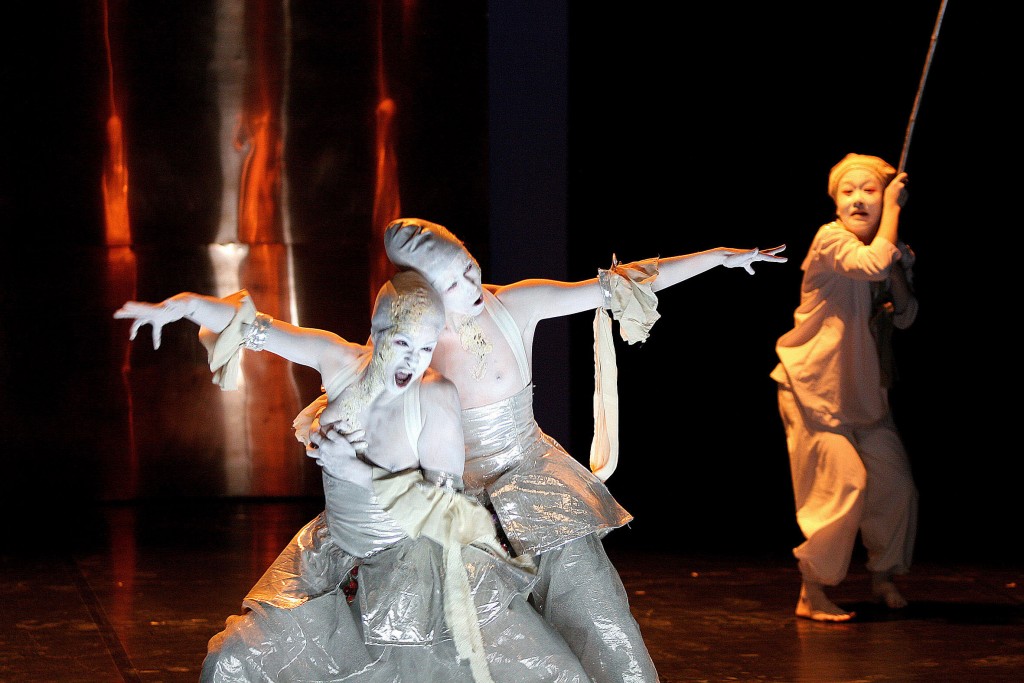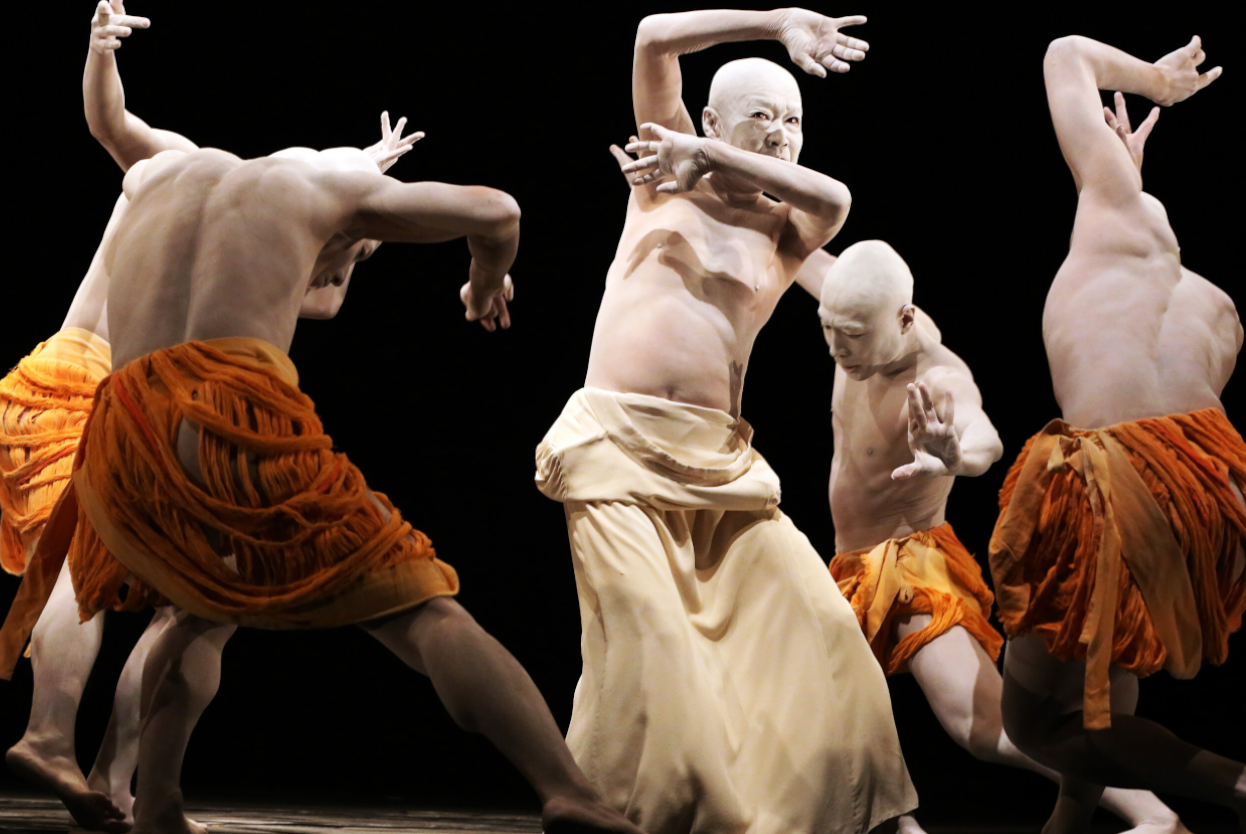Butoh, an avant-garde dance form originating in post-war Japan, transcends conventional dance traditions. Founded by Tatsumi Hijikata and Kazuo Ohno in the late 1950s, Butoh emerged as a reaction to the cultural and societal upheavals of the time. It blends elements of German Expressionism, Japanese theatre, and various indigenous and folk traditions, resulting in a unique, often hauntingly slow and expressive performance style.

The Origins of Butoh
Butoh, also known as Ankoku Butoh or the “Dance of Darkness,” began as a rebellious and provocative response to the devastation of World War II. Hijikata’s early works were characterized by their raw, unsettling depictions of taboo subjects and human suffering. These performances challenged audiences to confront uncomfortable truths and explore the depths of human emotion and experience.
Themes of Renewal and Reconnection
Butoh’s significance extends beyond its historical context, offering profound insights into themes of renewal, reconnection, and the human-nature relationship. The dance form emphasizes the body’s potential to transform, reflecting cycles of life, death, and rebirth. This focus on transformation resonates deeply with contemporary audiences, particularly in the context of environmental and societal challenges.
Relevance in the UK
In the UK, Butoh has found a dedicated following, with practitioners and audiences drawn to its meditative and introspective qualities. It encourages a reconnection with the body, nature, and community, offering a space for collective healing and reflection. This is particularly relevant in today’s fast-paced, technology-driven world, where the need for grounding and mindful practices is more pronounced than ever.
Key Concepts
- Renewal: Butoh embodies the idea of constant renewal, both in its movements and in its philosophy. The dance’s slow, deliberate motions invite participants to shed old layers and embrace new beginnings, mirroring natural cycles.
- Reconnection: Butoh fosters a deep connection between the dancer and their environment, encouraging an awareness of the interconnectedness of all life forms. This connection can be a powerful tool for fostering empathy and community.
- Nature: Many Butoh performances draw inspiration from natural elements, emphasizing the symbiotic relationship between humans and the natural world. This perspective is crucial for promoting environmental consciousness and sustainable living.

Contemporary Butoh Performers
Sankai Juku (Japan): One of the most renowned contemporary Butoh troupes, Sankai Juku, was founded by Ushio Amagatsu in 1975. Known for their breathtakingly precise and visually stunning performances, they often explore themes of birth, death, and the cyclical nature of life. Sankai Juku’s work is characterized by its minimalistic aesthetic and the use of suspended bodies, creating powerful, almost ethereal imagery.
Carlotta Ikeda (Europe): Carlotta Ikeda was a pioneering Butoh dancer in Europe, bringing the art form to the continent with her company Ariadone, established in France. Her intense and visceral performances left a lasting impact on the European dance scene, blending Western and Eastern elements to create a unique and compelling style.
Ko Murobushi (Europe): A disciple of Tatsumi Hijikata, Ko Murobushi brought Butoh to global audiences. He collaborated with various European artists and performed internationally, known for his intense and rigorous approach to the form. His work often delved into themes of existentialism and the human psyche.
Yumino Seki (UK): Based in the UK, Yumino Seki integrates Butoh with somatic movement practices. Her work emphasizes the body’s transformative potential, and she has performed extensively across Europe, offering workshops and solo performances that invite audiences to explore deep emotional and physical states.
These contemporary performers highlight the diverse expressions of Butoh, demonstrating its relevance and adaptability across different cultural contexts. Their work continues to inspire and challenge audiences, maintaining Butoh’s spirit of innovation and profound exploration of the human condition.
For more information on these performers and Butoh in general, visit Butoh UK and explore their extensive resources on Butoh history and contemporary practice.

Further Resources
- Butoh UK: A comprehensive resource for Butoh practitioners and enthusiasts in the UK.
- Kazuo Ohno Dance Studio: Learn more about one of Butoh’s founding figures and his legacy.
- Butoh Channel: Explore a collection of Butoh performances and interviews on YouTube.

Conclusion
Butoh offers a powerful means of exploring the human condition and our relationship with the world around us. Its emphasis on renewal and reconnection provides valuable insights and practices for addressing contemporary challenges. As we navigate an ever-changing world, Butoh reminds us of the importance of slowing down, connecting deeply, and embracing transformation.
For more information and to engage with the Butoh community, visit the resources listed above and consider attending local performances and workshops.


Leave a Reply